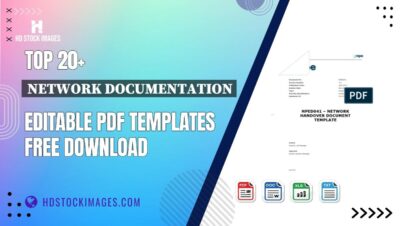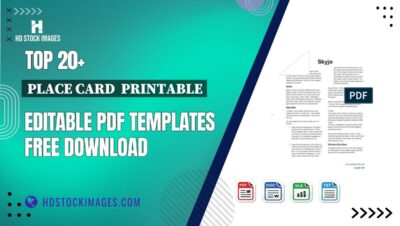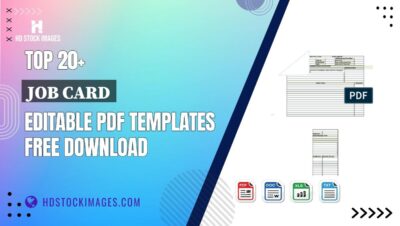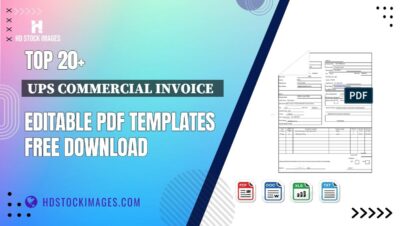In today's digital age, LinkedIn has emerged as an invaluable resource for anyone looking to advance their career. It's not just a platform for job seekers; it's a vibrant community where professionals connect, share insights, and foster growth. With over 900 million users worldwide, LinkedIn offers a unique opportunity to showcase your skills and network with industry leaders. Whether you're just starting your career or looking to climb the corporate ladder, understanding how to leverage
Building a Strong LinkedIn Profile

Creating a compelling LinkedIn profile is your first step towards unlocking the platform's potential. Here's how to make your profile stand out:
- Profile Picture: Choose a professional headshot that reflects your personal brand. A clear image where you're smiling can create a positive first impression.
- Headline: Your headline should go beyond just your job title. Include keywords that highlight your expertise. For instance, instead of "Software Engineer," try "Creative Software Engineer | Java & Python Enthusiast | Passionate About AI Innovations."
- Summary: Write a concise summary that showcases your professional journey, skills, and aspirations. Use a friendly tone and don't shy away from sharing your passions. For example, "I thrive on solving complex problems through innovative tech solutions, and I'm always eager to learn something new!"
Next, enhance your profile with specific sections:
- Experience: Detail your work history, focusing on achievements rather than just responsibilities. Use bullet points to outline your key contributions. For example:
- Led a team of 5 in developing a mobile app that increased user engagement by 30%.
- Streamlined internal processes, resulting in a 15% reduction in project turnaround time.
- Skills: Select 5-10 skills relevant to your industry. Ask colleagues for endorsements to bolster your credibility.
- Recommendations: Request recommendations from previous employers or colleagues. A well-written recommendation can add substantial weight to your profile.
Don't forget to engage with the platform! Share industry articles, comment on posts, and connect with fellow professionals. Join groups related to your field to stay updated on trends and opportunities. For example, participating in discussions in a "Tech Innovators" group can help you network with like-minded professionals and potentially lead to job opportunities.
Remember, your LinkedIn profile is often the first impression you'll make on potential employers or collaborators. Invest time in building a strong presence, and you'll open doors to countless professional opportunities.
Also Read This: Does LinkedIn Automatically Repost Jobs? Everything You Need to Know
3. Networking Opportunities on LinkedIn

When it comes to professional growth, one of the most valuable resources at your disposal is networking, and LinkedIn is tailored for just that. Imagine walking into a conference filled with industry leaders, potential mentors, and like-minded professionals—all without leaving your home! LinkedIn transforms that dream into a reality.
Why is Networking Important?
Networking is the key to unlocking many doors in your career. It allows you to:
- Build meaningful relationships with industry professionals.
- Gain insights and knowledge from experienced mentors.
- Discover job openings that aren't advertised publicly.
LinkedIn offers various features designed to enhance your networking experience:
- Connection Requests: Sending personalized connection requests with a brief note about why you want to connect can lead to fruitful relationships. For instance, if you admire someone’s work in marketing, mention a specific project of theirs that inspired you.
- LinkedIn Groups: Joining groups related to your industry can be incredibly beneficial. You can participate in discussions, share insights, and even ask for advice. For example, if you’re a software developer, a group focused on coding best practices can help you learn and connect.
- Engaging with Content: Like, comment, and share posts from your connections. This not only keeps you visible but also encourages others to engage with your content, fostering organic connections. If you post an article about trends in your field, expect to attract professionals interested in the same topics.
Networking on LinkedIn isn't just about quantity; it's about quality. Focus on building genuine relationships rather than simply increasing your connection count. A single strong connection can lead to mentorship, collaborations, or job opportunities that a hundred weak connections may not.
Also Read This: What Does 'Endorse' Mean on LinkedIn?
4. Leveraging LinkedIn for Job Searches
Looking for a new job can be daunting, but LinkedIn is your best ally in this journey. With over 700 million users, it's a treasure trove of job opportunities waiting to be uncovered. What’s great is that LinkedIn isn't just a job board; it's a comprehensive platform to showcase your skills and connect with employers directly.
How to Optimize Your LinkedIn Profile for Job Searches:
Your LinkedIn profile should be your professional portfolio. Here’s how to make it shine:
- Complete Your Profile: Ensure your profile is 100% complete. This means a professional photo, a compelling headline, and a well-crafted summary. For instance, instead of just stating your job title, include a catchy phrase that highlights your expertise—like “Innovative Digital Marketer Driving Results Through Creative Strategies.”
- Use Keywords: Identify keywords related to the jobs you're targeting and include them in your profile. If you're looking for a role in project management, terms like “agile,” “stakeholder management,” and “team leadership” should be sprinkled throughout your summary and experience sections.
- Showcase Your Achievements: Use bullet points to highlight your accomplishments in previous roles. Numbers speak volumes—if you increased sales by 30% or managed a team of 10, include those figures!
Utilizing Job Search Features:
LinkedIn offers robust job search tools:
- Job Alerts: Set up job alerts for specific roles or companies. This way, you’re one of the first to know when new positions are posted, giving you a competitive edge.
- Easy Apply: Many job postings have an “Easy Apply” option, allowing you to submit your application with just a few clicks. Make sure your profile is polished, as this is often your first impression!
- Company Research: Before an interview, research the company on LinkedIn. Use the insights gathered to tailor your answers to reflect the company culture and values.
In summary, leveraging LinkedIn for job searches is about showcasing your best self and utilizing the platform’s tools to connect with opportunities that align with your career goals. So, don’t just be a passive user—engage, connect, and take charge of your professional journey!
Also Read This: How to Disconnect from Someone on LinkedIn
5. Engaging with Content and Thought Leaders
When it comes to professional growth, one of the most powerful tools at your disposal on LinkedIn is the ability to engage with content and thought leaders. This isn’t just about scrolling through your feed; it’s about actively participating in discussions and sharing valuable insights.
Imagine this: You come across a post by a well-respected figure in your industry discussing the latest trends. Instead of merely liking it, you take a moment to comment thoughtfully. This is your opportunity to showcase your expertise and perspectives. By responding meaningfully, you not only express your views but also get noticed by others in your field.
Here’s why engaging is essential:
- Builds Your Reputation: Regularly commenting on and sharing posts from industry leaders increases your visibility. Others will recognize you as someone who engages in meaningful conversations.
- Expands Your Network: Engaging with thought leaders can lead to new connections. When you comment on a post, there’s a chance that the author or other readers will check out your profile.
- Stays Updated: Following thought leaders ensures that you stay informed about the latest industry trends and issues, helping you remain relevant in your field.
To make the most out of your engagement:
- Identify key influencers in your industry and follow them.
- Schedule time each week to browse their content and engage.
- Share your insights and ask questions to foster discussion.
Remember, LinkedIn is a two-way street. The more you contribute, the more you gain. So, don’t hesitate to dive into conversations, share your knowledge, and connect with others who share your passions.
Also Read This: Merging Two LinkedIn Accounts: A Step-by-Step Guide
6. Utilizing LinkedIn Groups for Industry Insights
LinkedIn Groups can be a goldmine for professionals looking to deepen their industry insights and network with like-minded individuals. These groups serve as communities where professionals gather to share knowledge, ask questions, and discuss industry-related topics.
Why should you consider joining LinkedIn Groups?
- Targeted Discussions: Groups often focus on specific industries or interests, allowing you to participate in conversations that matter most to you.
- Access to Exclusive Content: Many groups share resources, articles, and industry news that may not be available elsewhere.
- Networking Opportunities: Joining a group means you’re surrounded by professionals who share your interests. This can lead to valuable connections and collaborations.
Here’s how to effectively utilize LinkedIn Groups:
- Choose the Right Groups: Look for groups that align with your professional goals. Check the group activity and member engagement before joining.
- Participate Actively: Don’t just be a lurker. Share your experiences, ask questions, and provide answers. Your active participation will help you stand out.
- Follow Group Rules: Every group has its own set of rules. Respect these to maintain a positive reputation within the community.
For instance, let’s say you’re in a marketing group. You could post a question about recent changes to social media algorithms. This not only shows your engagement but also invites others to share their insights, enriching the conversation.
In summary, LinkedIn Groups are a fantastic way to tap into collective knowledge and insights in your industry. By actively participating, you not only gain knowledge but also build relationships that can lead to new opportunities. So go ahead, find those groups that resonate with your professional journey, and dive in!
Also Read This: How to Shorten Your LinkedIn URL: A Simple Method
7. Measuring Your LinkedIn Success
As with any strategy in life, it’s essential to measure your success, and LinkedIn is no different. Understanding how well you're doing on this platform can help you refine your approach and make meaningful connections. So, how do you measure your LinkedIn success? Here are some key metrics to keep an eye on:
- Profile Views: Track how many people are viewing your profile. A steady increase often indicates that your profile is optimized and attracting interest.
- Connection Requests: Monitor the number of connection requests you receive. If you’re getting more requests, it might be time to update your profile summary or engage more with your network.
- Engagement on Posts: Look at likes, comments, and shares on your posts. High engagement suggests that your content resonates with your audience.
- Profile Strength: LinkedIn provides a profile strength meter. Aim for “All-Star” status, which indicates a complete profile with various features filled out.
- Opportunities Generated: Track job offers, collaborations, or speaking engagements that come through LinkedIn. This is the ultimate measure of success!
Remember, success doesn’t just come from numbers. It’s also about the quality of your connections and the value you provide. Are people reaching out for advice? Are you being asked to join interesting projects? These qualitative indicators can be just as significant, if not more so, than the numerical metrics.
To effectively measure these aspects, make sure to check your statistics regularly. LinkedIn offers analytics tools for posts and profile performance, making it easier to identify what works best for your audience. Adjust your strategy based on these insights; for example, if you find that career-related posts get more engagement than personal anecdotes, you might want to focus more on professional content.
8. Conclusion: Maximizing LinkedIn for Career Advancement
In conclusion, LinkedIn is a powerful tool for anyone serious about career advancement. It’s like a digital business card, networking event, and professional portfolio all rolled into one. By actively engaging with the platform, you can unlock countless opportunities that can propel your career forward.
Here are some final tips to maximize your LinkedIn experience:
- Be Authentic: Share your genuine self. People connect with authenticity, so don’t be afraid to show your personality!
- Stay Active: Regularly update your profile, share articles, or comment on others’ posts. Consistency keeps you visible.
- Network Strategically: Don’t just connect with anyone. Aim to connect with individuals in your industry or those who align with your career goals.
- Seek Recommendations: A strong recommendation can set you apart. Don’t hesitate to ask former colleagues or supervisors for endorsements.
- Leverage Groups: Join relevant LinkedIn groups to expand your reach and engage with like-minded professionals.
Ultimately, your LinkedIn journey is what you make of it. By combining thoughtful engagement with strategic actions, you can turn this platform into a springboard for professional growth. So, dive in, connect, and watch your career soar!
 admin
admin








